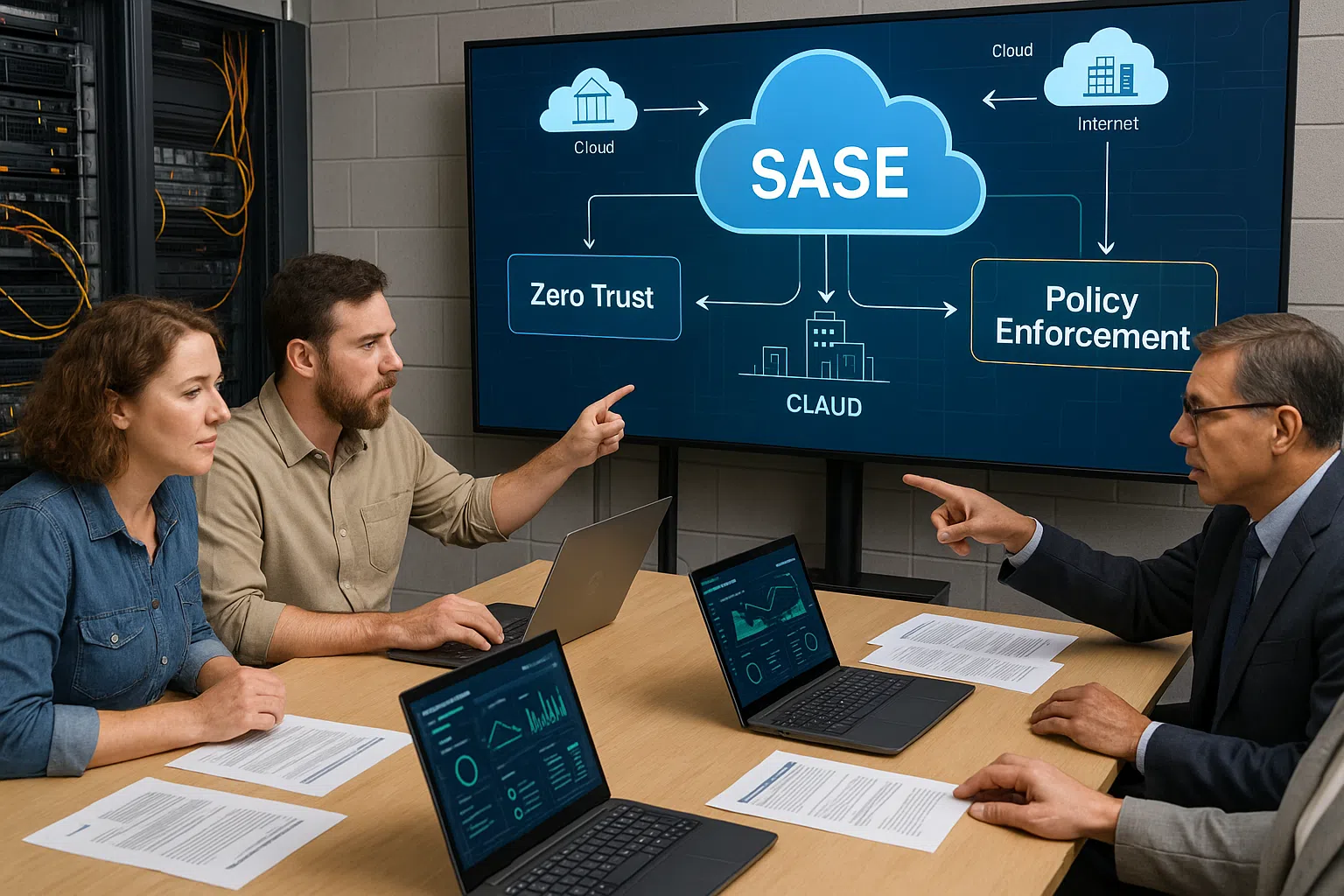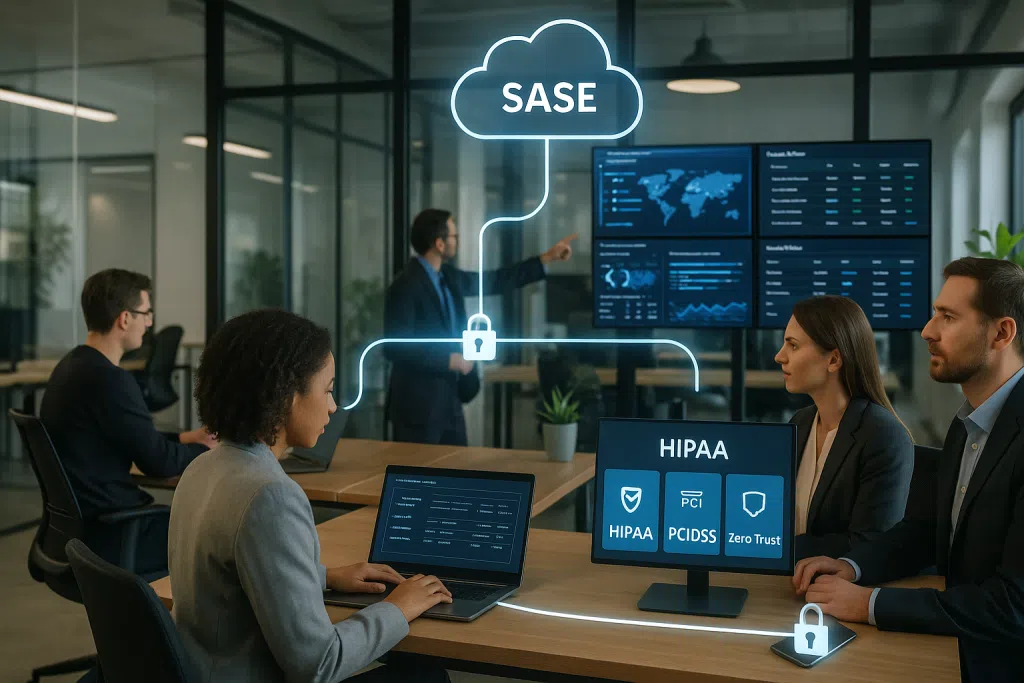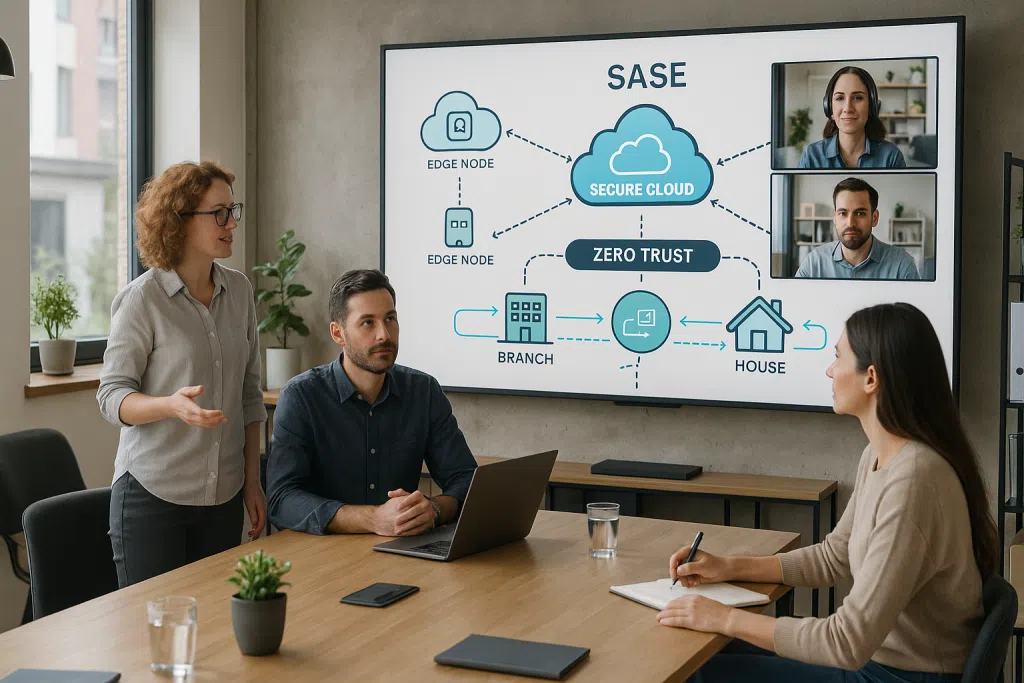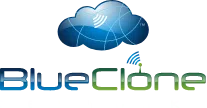As Seen On

SASE – Secure Access Service Edge: The Ultimate Framework for SMB & Enterprise Cybersecurity and Compliance

Why Secure Access Service Edge (SASE) is Transforming Network Security and Compliance for Regulated Businesses
For small and mid-sized businesses in healthcare, finance, legal, and pharmaceutical sectors, network security and regulatory compliance demand more than a patchwork of tools. The rising pattern of remote work, increasing cloud adoption, and sophisticated threats require a new framework. Here is where SASE, secure access service edge, comes into focus as a game-changing technology that unifies robust security controls and optimized connectivity into a single cloud-native platform.
SASE (pronounced “sassy”) simplifies complex IT environments, merges network and security services, and strengthens control over sensitive data, even when accessed from anywhere. The concept is essential for organizations navigating HIPAA, PCI-DSS, FINRA, and similar compliance mandates. SASE’s scalable architecture ensures that access controls, threat protection, and compliance checks happen in real time, no matter where users, apps, or data reside.
For healthcare practices concerned with electronic patient records, law firms handling confidential files, and finance organizations storing customer data, SASE provides a backbone for managing risks and operational integrity. Examples abound: a multi-site medical group can secure staff logins across locations, while a remote accounting firm can safely collaborate on cloud files without fear of data leakage or ransomware. According to Gartner’s 2024 Security Report, nearly 60% of midsize regulated firms plan to migrate traditional security stacks to a SASE framework within the next three years.
Understanding SASE Network Architecture: Foundation for Modern, Distributed SMBs
A secure access service edge strategy begins with reimagining how network and security controls are delivered. Traditional firewalls and VPNs often create roadblocks for distributed workforces and cloud-based workflows. In contrast, SASE network architecture integrates security enforcement (such as cloud-delivered firewalls and secure web gateways) with wide-area networking (WAN) services into a flexible, unified service.
SASE network architecture operates on four main pillars:
- Identity-driven security: User policies are dynamically applied based on identity, device, and context.
- Cloud-native deployment: Security and networking processes are delivered through scalable, cloud-based infrastructure, reducing the need for on-premises appliances.
- Globally distributed enforcement: Security controls travel with the user, not the location, so branch offices, remote employees, and mobile users all receive consistent protections.
- Continuous adaptation: The framework analyzes traffic in real time and adjusts defenses as threats evolve, so emerging risks are caught before causing damage.
This approach aligns seamlessly with regulated SMBs (and enterprises alike), where employees often switch between office, home, and third-party locations, demanding uninterrupted protection. For example, a New Jersey healthcare provider can offer clinicians secure access to patient records on any device, while the system automatically blocks risky files and enforces encryption policies. IT teams benefit from simplified management, no more tangled point solutions, VPNs, publicly open RDP ports, and comprehensive visibility into users, apps, and data across the ecosystem.
Incorporating a secure access service edge strategy also streamlines compliance with frameworks like HIPAA and PCI-DSS. Because SASE policies are applied uniformly and automatically, audit trails and regulatory reports become easier to generate and defend.


Key Components of the SASE Security Framework for Regulated Industries
Understanding the individual building blocks of a SASE security framework helps make sense of its practical advantages. The best SASE solutions merge several cloud-based security functions and advanced networking technologies into one cohesive platform. Here’s how it works:
Core Security Services
- Zero Trust Network Access (ZTNA): Verifies users before granting application access, reducing the threat of insider breaches and stolen credentials.
- Cloud Access Security Broker (CASB): Monitors app activity, prevents shadow IT, and protects sensitive data shared across cloud SaaS platforms.
- Secure Web Gateway (SWG): Blocks malicious sites, content threats, and policy violations, keeping remote and onsite web traffic safe.
- Firewall-as-a-Service (FWaaS): Provides enterprise-grade firewall features everywhere, not just at company HQs.
Network Optimization
- Software Defined Wide Area Network (SD-WAN): Routes traffic along the best path for speed and reliability, connecting users to applications with the lowest latency.
- Bandwidth management and monitoring: Automatically adjusts to high-usage applications without compromising security.
Compliance and Threat Intelligence
- Automated policy enforcement: Ensures that access, encryption, and data retention rules match relevant regulations at all times.
- Threat intelligence and analytics: Continuously evaluates vulnerabilities and adapts protections, which is vital for industries with strict cybersecurity compliance requirements.
A law firm in Princeton, for instance, might struggle to provide secure access to case management tools while fielding new types of phishing attempts targeting partners. Using the SASE network security model, protections are consistent and updated across every user session, whether inside the office network or when working from home.
For regulated businesses, these SASE components provide better visibility and an audit-ready environment, serving as proof that security protocols and industry regulations are followed. If a compliance auditor requests documentation, IT staff can generate it within minutes, rather than scrambling to piece information together from disparate tools. The best SASE solutions incorporate integrated SIEM (Security Information and Event Management), allowing for real-time data analysis, threat hunting, and data preservation for auditing and compliance.
Cloud providers and leading SASE providers are constantly refining these components. According to Forrester’s Q2 2024 Report on Network Security, integrated SASE frameworks cut operational overhead for compliance audits by up to 30% in the financial and medical sectors.
Choosing the Best SASE Solutions: What SMBs Should Look For in a Provider

Selecting from the many SASE providers on the market can feel daunting. The best SASE solutions for your business are those that balance compliance, user experience, threat protection, and operational simplicity. Here are factors to weigh when evaluating SASE solutions for your regulated firm:
Industry-Specific Compliance Features
Different sectors, healthcare, finance, legal, face unique regulatory requirements. An effective SASE technology partner should offer out-of-the-box compliance mappings (such as prebuilt HIPAA or PCI-DSS policy templates) and easy-to-generate auditing tools. Ask if the provider supports the certifications and frameworks relevant to your operations.
Localized Network Performance
SASE security frameworks depend on low-latency connections and regional points-of-presence (POPs). For a company in Central New Jersey, for example, it’s important to choose a SASE solution with well-connected data centers and strong service-level agreements (SLAs) covering your specific geography. This ensures remote users, branch offices, and on-the-go staff receive fast, consistent security.
Set-Up and Flexibility
Cloud-based SASE deployment reduces reliance on physical appliances, a clear win for smaller offices and multisite businesses. However, it’s equally important that the solution captures your unique workflows, app requirements, and compliance checklists. Look for flexible policy engines, integrated reporting, and intuitive management dashboards.
CPAs and Accountants
Local accounting firms now coordinate busy tax seasons with a larger remote staff. SASE frameworks guarantee secure remote connections to tax prep platforms and encrypted client file transfer, aligning with IRS and SOC2 guidelines. If suspicious login activity is detected, access can be cut instantly and threat analytics shared with regulators.
Integration with AI and Cloud
Many SMBs weave AI tools for scheduling, marketing, or client service into their workflow. SASE cybersecurity ensures these AI apps get only the precise access and data needed, blocking riskier functions or unauthorized requests automatically. IT staff easily extend security coverage to new software integrations as the business grows.
Integration with AI and Cloud
Many SMBs weave AI tools for scheduling, marketing, or client service into their workflow. SASE cybersecurity ensures these AI apps get only the precise access and data needed, blocking riskier functions or unauthorized requests automatically. IT staff easily extend security coverage to new software integrations as the business grows.

SASE Technology in Action: Real World Scenarios for Regulated SMBs
Practical applications of SASE technology reveal its distinct advantage over traditional security models. Modern SMBs face rising pressure to keep data protected amid flexible work arrangements, varied devices, and persistent cyber threats. Here are real-world uses showing the measurable impact of SASE network security:
Protecting Patient Privacy in Healthcare
A growing outpatient medical group wants providers to access medical records from clinics, satellite offices, and home visits. Using SASE’s secure access service edge, all logins are validated with ZTNA, cloud file access is governed by CASB, and endpoint protections prevent accidental downloads of sensitive information. Policy enforcement for HIPAA compliance is managed centrally, reducing manual work for the IT director.
Financial Firms Managing Distributed Workforce
An investment advisory firm with branches across Princeton and Trenton deploys a SASE platform to unify policy enforcement. Integrated SD-WAN balances bandwidth for video meetings, file transfers, and data analytics apps, while automated threat monitoring isolates attempts at wire fraud and phishing. Customized reporting aligns with FINRA audit demands, ensuring seamless compliance.
Law Firms and Legal Compliance
A multi-partner law practice needs team members to work securely on case documents from both the office and the court. SASE solutions enforce encryption, log access events, and block unsanctioned sharing apps. Secure email filtering eliminates malware and prevents leaks of privileged communication. During an annual audit, the compliance manager demonstrates full adherence to legal IT policies using the platform’s built-in reporting.
CPAs and Accountants
Local accounting firms now coordinate busy tax seasons with a larger remote staff. SASE frameworks guarantee secure remote connections to tax prep platforms and encrypted client file transfer, aligning with IRS and SOC2 guidelines. If suspicious login activity is detected, access can be cut instantly and threat analytics shared with regulators.
Integration with AI and Cloud
Many SMBs weave AI tools for scheduling, marketing, or client service into their workflow. SASE cybersecurity ensures these AI apps get only the precise access and data needed, blocking riskier functions or unauthorized requests automatically. IT staff easily extend security coverage to new software integrations as the business grows.
The versatility of the security service edge model means small and mid-sized businesses no longer need to juggle multiple point solutions, purchase complex firewall gear, or worry about shadow IT. They achieve full-spectrum cybersecurity compliance, actionable audit trails, and peace of mind.
Integrating SASE With Existing IT Environments: Overcoming Common Challenges
Many regulated organizations hesitate to move to a new security service edge framework because of the fear of disruption or integration complexity. Fortunately, the best SASE providers design their solutions to work alongside existing networking infrastructure and security tools, ensuring a seamless transition.
For example, a financial services firm may have invested heavily in legacy firewalls or on-premises VPNs. With phased SASE adoption, these defenses can remain operational while SASE components gradually take over user authentication, remote access, and cloud security. Integrated migration tools and expert project management from your SASE provider simplify the process, minimizing downtime and protecting daily business operations.
Key considerations for successful SASE network architecture integration include:
- Conducting a thorough audit of current IT environments and workflows before implementation.
- Prioritizing migration of high-risk user groups, such as remote and third-party contractors, into the SASE environment first.
- Mapping out critical business applications (EMR, legal e-discovery tools, cloud CRMs), so access policies and DLP controls are correctly assigned in the new framework.
- Engaging experienced SASE security consultants who understand the nuances of your industry’s regulatory demands.
SMBs that invest in pre-migration planning often report a smoother transition and reduced incidents of user disruption. This brings peace of mind for organizations dependent on predictable access, such as medical clinics with scheduled patient care, or CPAs during peak tax seasons.
SASE Secure Access Service Edge: Frequently Overlooked Benefits
Beyond compliance, performance, and risk management, SASE technology brings several strategic advantages. These persistent benefits are particularly valuable in competitive or resource-constrained sectors like healthcare and law.
Enhanced User Experience
Traditional security protocols can slow down or frustrate employees when switching between locations or apps. SASE eliminates these bottlenecks by applying single sign-on and contextual authentication, providing a frictionless experience whether users are sharing files, logging into medical software, or collaborating with regional partners. The result is higher user satisfaction and improved productivity across the board.
Centralized Policy Consistency Across All Offices
For multi-branch organizations, applying consistent security policies often leads to gaps or exceptions at the edge. With SASE, policies on device usage, file sharing, encryption, and compliance are set centrally and enforced everywhere, reducing the risk of “shadow IT” and increasing overall compliance confidence, crucial when scaling to new locations or acquiring satellite offices.
Simplified Vendor Management and Cost Efficiency
Historically, SMBs would juggle multiple vendors for firewalls, VPNs, endpoint protection, and cloud controls. SASE consolidates these into one solution, providing unified licensing, reporting, and support. This unified approach not only simplifies budgeting and support contracts but also lowers the total cost of ownership by eliminating redundant or overlapping technology investments.
Improved Incident Response
With security events collected and analyzed from every access point (remote, on-premises, or cloud), detecting and responding to incidents is faster. Automated playbooks help isolate compromised accounts, remediate threats, and document incident details for compliance. In healthcare or legal services, this can make the difference between a minor scare and a reportable breach. According to a 2023 study by Cybersecurity Compliance Alliance, companies with SASE frameworks reduced average incident response time by 38% compared with those using traditional network models.
Business Continuity and Resilience
Natural disasters, internet outages, or public health crises can strain traditional network setups. SASE’s cloud-based model shifts critical security controls away from single points of failure and delivers secure connectivity wherever users can get Internet access. This resilience is essential for regulated SMBs who must provide uninterrupted access to medical records, client files, or financial data, even during unplanned disruptions.
Evaluating SASE Network Security for Cybersecurity Compliance
When cybersecurity compliance is at stake, regulated SMBs cannot afford to rely on outdated architectures or fragmented setups. SASE network security directly addresses the pain points that traditionally delayed or complicated regulatory alignment. Here’s how the switch to a unified SASE security framework supports ongoing compliance:
Streamlined Policy Management
Instead of manually configuring rules for every device or site, SASE lets IT administrators define global access, encryption, and monitoring policies from a single dashboard. Updates and new regulatory rules are pushed instantly to all users; no need for local reconfiguration. This is especially valuable for organizations needing to demonstrate continuous compliance with dynamically changing legislation.
Continuous Monitoring and Automated Reporting
Traditional audits force IT teams to scramble across different logging platforms and tools. With SASE solutions, all user activity, data movement, and security incidents are logged in a centralized, standardized format. Routine compliance reviews or incident investigations become a matter of generating prebuilt reports, saving valuable administrative time.
Built-In Data Loss Prevention
Financial and healthcare businesses must guard against inadvertent or malicious data leaks. SASE providers offer inline DLP tools that monitor file transfers, social media, and cloud storage activity, automatically blocking or alerting on violations of confidentiality policies.
Third-Party and Partner Collaboration
Working securely with outside vendors or partners is easier with SASE’s security service edge approach. You can grant conditional, time-limited access to external users, monitoring their activity and enforcing controls until the engagement ends. For legal and financial compliance, this means third-party risk is tightly managed.
Proactive Regulatory Updates
The best SASE solutions work with industry experts to release template policies as new regulations roll out, so your compliance posture evolves as standards change. For instance, if New Jersey healthcare rules shift, updated controls can be distributed to all relevant users instantly.
A 2025 survey by Cybersecurity Magazine found that SMBs adopting SASE frameworks beat their peers on audit pass rates and time-to-resolution for detected threats. They also reported fewer compliance-related business interruptions thanks to centralized policy enforcement and real-time visibility.
Frequently Asked Questions About SASE Secure Access Service Edge
SASE (Secure Access Service Edge) is a cloud-native approach that integrates networking and security functions into a single platform. Unlike traditional security, which relies on separate firewalls, VPNs, and appliances, SASE brings together zero-trust access, application control, web filtering, and secure network delivery from anywhere. This unified approach delivers consistent protection across remote, branch, and cloud environments without added complexity.
Yes, SASE security frameworks are purpose-built to align with strict industry regulations. Automated policy enforcement, centralized activity logging, and prebuilt compliance templates help organizations demonstrate and maintain compliance with HIPAA, PCI-DSS, FINRA, and similar mandates. Audit processes and reporting are simplified, reducing the risk of non-compliance penalties.
SASE network architecture is designed to optimize traffic, reduce latency, and ensure secure, high-speed connectivity for all users, whether they’re at HQ or remote. Features like SD-WAN and cloud-based enforcement points adapt routes dynamically, keeping applications responsive and reliable without requiring users to “tunnel back” through legacy data centers.
When selecting a SASE provider, focus on: industry compliance support, data center proximity for low latency, rich security analytics, a flexible policy engine, and easy integration with your existing apps and workflows. Vendor transparency, local support, and experience with regulated industries are also important factors.
Absolutely. SASE solutions are inherently scalable, and policies and protections can be extended to new locations, users, and SaaS tools with minimal setup. As compliance requirements evolve or new threats emerge, a robust SASE framework allows you to rapidly adjust without deploying new hardware or retraining teams.
About Blueclone Networks
Established in 2006, Blueclone Networks has been a trusted provider of IT solutions in New Jersey. Our commitment to excellence and customer satisfaction has positioned us as a leading network support company in NJ. We pride ourselves on delivering services that not only meet but exceed our clients’ expectations.
Schedule a Consultation




